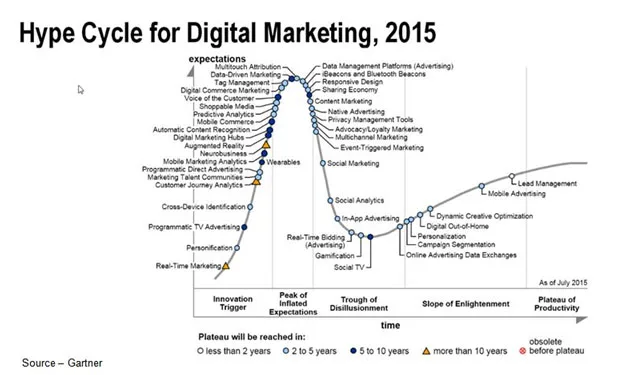Ads Count

I like ads – that is, good ads. I really believe that good ads have the ability to persuade you to buy something.
Put an hour of the top 100 video ads on TV … I’m there!
I don’t like bad ads or really dumb ads. And I don’t like auto-play video ads.
Stupid marketing activities, “publisher” ad placements and ads following me really tick me off. How stupid do they think the consumer is?
Don’t answer that!
However, I don’t use ad blockers or ad skippers. If an outlet gives me content free or subsidized, I’ll watch/scan your ad because it’s the price I pay for the free information, education and entertainment.
Face it; it costs money to keep you informed. If we didn’t have ads on the Internet, we wouldn’t have access to all that wonderful free content online.
So who’s at fault in it all?

Damn near everyone–or in the case of bots, everything!
Back when the Internet was just in its infancy, Stewart Brand, founder of Whole Earth Catalog, explained the dilemma, “On the one hand, information wants to be expensive, because it’s so valuable. The right information in the right place just changes your life. On the other hand, information wants to be free, because the cost of getting it out is getting lower and lower all the time. So you have these two fighting against each other.”
The Target
The objective of a company, product or service is to reach, educate, inform and convince a person to buy … something.
While firms aren’t really concerned about the individual’s age, race, sex, religion or political bent; the publishing/advertising industry tries to divide us up into something really simple that simple minds can grasp.
Right now, the millennial is the sweet spot.

Sometimes known as Gen Y, they were born between 1982-2004 and of the approximate 7.6B individuals on the planet, they represent about 2.3B worldwide:
- In the U.S., they control 21 percent of discretionary purchases
- 71 percent of Latin Americans say they need to reach the top in their career, 43 percent worldwide
- 60 percent would rather spend on experiences than material things
- They represent 20 percent of UK population
- In China, 65 percent own products to impress
- 60 percent reside in Asia
- By 2020, they will drive the APAC (Asia Pacific) economy
- They are more likely to share ads online than other demographics
- 23 percent are more likely to enjoy relevant ads
- 82 percent mute video ads that aren’t relevant
- 62 percent don’t like pre-roll viewing
- 93 percent will consider using ad-blocking software
- They’re book smart/savvy, like fun first/work next, confident
Don’t ask me how folks come up with these global/granular assumptions but it was probably a bunch of anthropologists, shrinks, analytical/data scientists who had to put everyone into some type of box they felt comfortable with.
As bad as it was/is, ad slots have historically been sold based on GRP (gross rating points) or CPM (cost per thousand), theoretical number of potential folks the ad was going to reach, and/or impressions, the number of times the ad hits your screen.
No one said it’s perfect … it is what it is!
The prize isn’t insignificant. This year, ZenithOptimmedia projects that global ad expenditures is on course to grow 4.6 percent to $579B.

Google’s SEO (search engine optimization) rakes in billions and they don’t even have to research, write or print/produce a thing. They simply determine who pops up first.
Facebook’s content/news service keeps people informed on what’s hot/what’s not and is growing to take in more of the $60B spent in the U.S. on digital ads.
Alibaba gets a good chunk of its income from the estimated $40B spent to reach customers in China.
Siphoning Dollars
Of course, they don’t get all that money. Nope.
A good part of income goes to click bots and traffic brokers who siphon off traffic (and dollars) in a mind-boggling scale.

No one is really sure how much ad fraud, click baiting and traffic laundering is costing advertisers and media outlets but the ANA (Association of National Advertisers) estimates bots cost advertisers $6.3B last year.
It’s sorta’ like the folks in the 1977 film “Fun with Dick and Jane” when they attempted to rob the phone company and everyone cheered.
Taint funny!
Fraud is fraud and everyone pays in the long run.
The Road Block
While technically, the use of ad blockers isn’t fraud, it is causing increased concern for publications/distribution platforms and advertisers.
PageFair and Priori Data reported:
- that ad blocker downloads doubled this past year
- about 22 percent of the smartphone owners use them
- there are 408M ad blocker browser users
- 36 percent of Asia mobile users block ads – 159M in China, 120M in India

Mary Meeker, of Kleiner, Perkins, Caufield and Byers, explained the problem during her annual Internet Trends Report:
- 81 percent mute video ads they find irrelevant
- 62 percent are put off by a brand that forces pre-roll viewing
- The average mobile experience consists of four ad-unit formats
- tiny banner ads you can’t read
- pop-ups
- now-standard in-feed ads you can barely scroll past
- Almost universally, the ads aren’t entertaining, don’t evoke emotion, aren’t personal/relatable, aren’t useful
Other than that, folks are just dying to look at your ads.
Ooopppsss, there are two other reasons for using ad blockers:
- Most ads are so bad they slow down websites until they become almost unusable
- Site data tracking sites use is deemed too aggressive, thorough
 It’s true, information wants to be free and it wants to be expensive; but as Dr. Frederick Treves said, “Abominable things these machines – you can’t reason with them.”
It’s true, information wants to be free and it wants to be expensive; but as Dr. Frederick Treves said, “Abominable things these machines – you can’t reason with them.”
# # #